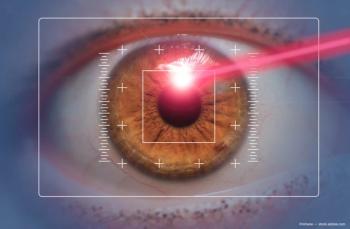
ARVO 2025: Retina extracellular vesicles in diabetic retinopathy
At ARVO 2025, in Salt Lake City, Utah, Emma Lessieur-Contreras, MD, PhD, talked about her poster on retina extracellular vesicles, and the role that they play on diabetic retinopathy.
At ARVO 2025, in Salt Lake City, Utah, Emma Lessieur-Contreras, MD, PhD, talked about her poster on retina extracellular vesicles and diabetic retinopathy
Video Transcript:
Editor's note: The below transcript has been lightly edited for clarity.
Emma Lessieur-Contreras, MD, PhD:
Hello. My name is Emma Lessieru, and I recently became an assistant professor in the department of ophthalmology at UCLA, and I'm a principal investigator at Doheny Eye Institute. And the goal of my laboratory is to understand the epipathology of diabetic retinopathy and ways to prevent it. I'm looking for unconventional therapies to prevent the development of the early stages of the disease. Today, here at ARVO, I'm presenting my poster that is related to retina extracellular vesicles, and what is the role that they play on diabetic retinopathy. We have seen that patients with diabetic retinopathy and the vitreal samples from those donors, we have found that there's increased levels of extracellular vesicles, but we don't know exactly where do they came from. If they originated in the eye, or they are coming from any other tissues in the body. So the goal of my poster today is to try to understand where those extracellular vesicles came from, who produced them, and if they cause any local effects or any non retinal associated effects. So we generated–we activated [inaudible] so we can have extracellular vesicles that are green fluorescent proteins from the photoreceptors. And we found out for the first time that indeed, photoreceptors secrete extracellular vesicles that contribute to the pool of retina secreted extracellular vesicles. Those retina extracellular vesicles cause activation and expression of ICAM-1 and retinal endothelial cells ex vivo. And we also determined that those extracellular vesicles derived from diabetic animals activate white blood cells ex vivo, leading to an increased cytotoxicity against retinal endothelial cells.
So what is the next step for this project? Of course, we want to investigate cargo of those extracellular vesicles, if there's any way for us to modulate them, and with that, prevent the development of the early stages of diabetic retinopathy. Well, diabetic retinopathy, per se, you know, it's the most common long term complication of patients with diabetes and leads to blindness, right? Patients start losing vision that is secondary to different types of hemorrhages that they present in the eye and eventually scaring tissue leads to blindness. As of now, we still don't know what is the role of those extracellular vesicles, and that's the main project at my lab that now we are launching our lab, we'll start working on that. So trying to understand the role of those retinal extracellular vesicles and the development of the retinopathy. We have seen that it's an increased levels of extracellular vesicles in the plasma, also of patients with diabetes. Again, where do those extracellular vesicles come from? We don't know, and it's an intensive research lately, over the last 5 to 10 years, trying to understand what is the role of this extracellular vesicles. So different tissues in the body get affected by hyperglycemia, and all those tissues in the body have been shown that they secrete increased levels of extracellular vesicles, or if they are not increased, the cargo somehow is different.
Newsletter
Don’t miss out—get Ophthalmology Times updates on the latest clinical advancements and expert interviews, straight to your inbox.















































.png)


